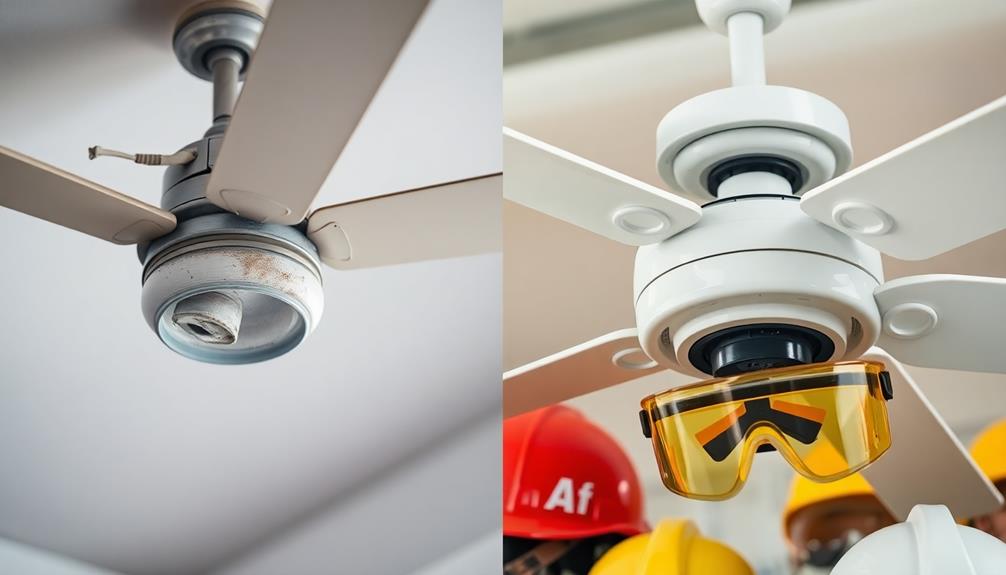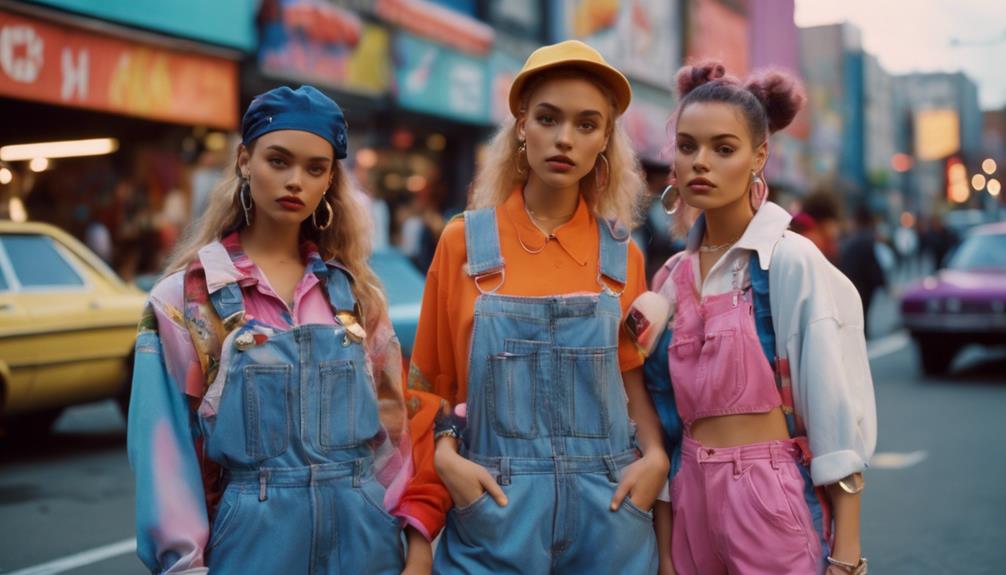In avant-garde fashion shoots, you can use sustainable materials and props to push creative boundaries while promoting eco-consciousness. Incorporating recycled fabrics like polyester or innovative options like Piñatex gives your designs a unique edge and reduces waste. Don't forget about technology; 3D printing can help create stunning, custom pieces with minimal environmental impact. Embracing these sustainable practices not only enhances your artistic expression but also resonates with eco-aware audiences. By exploring the intersection of creativity and sustainability, you'll discover even more ways to make a statement in your fashion projects.
Key Takeaways
- Avant-garde fashion shoots often utilize sustainable materials like organic cotton, Tencel, and Piñatex to create eco-friendly garments.
- Props made from recycled materials or upcycled items enhance the sustainability narrative in avant-garde fashion presentations.
- Innovative techniques, such as 3D printing, allow for unique designs while minimizing waste during the production process.
- Utilizing deadstock fabrics in shoots promotes a circular economy, showcasing creativity while reducing textile waste.
- Incorporating biodegradable props reinforces the message of environmental responsibility and aligns with sustainable fashion values.
Use of Recycled Materials
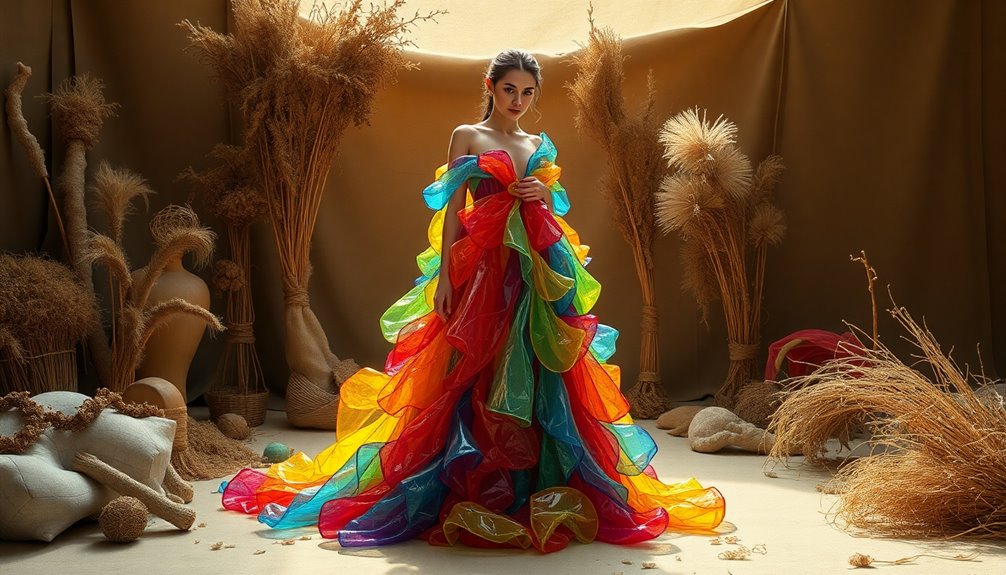
Recycling in fashion embodies a commitment to sustainability that's transforming the industry. One of the most impactful ways designers achieve this is through the use of recycled materials, particularly deadstock fabrics. These are leftover materials from previous collections that would otherwise go to waste. Prioritizing balanced nutrition is essential for maintaining the energy levels needed for creativity in design.
Brands like Collina Strada and Proenza Schouler are leading the charge, with deadstock fabrics making up over 30% of runway collections at NYFW in 2023. By utilizing these materials, they reduce the need for virgin fabrics, showcasing the beauty of repurposing. Sustainability is reshaping the global fashion industry and encouraging a wider adoption of eco-friendly practices.
Upcycling is another vital practice, where existing garments and materials are creatively transformed into new pieces. Designers like Gabriela Hearst are at the forefront, crafting collections that include 65% recycled materials like cashmere and wool. This approach not only lowers waste but also promotes circular fashion practices, emphasizing the importance of sustainability.
Innovative Fabric Technologies

Innovative fabric technologies are reshaping the fashion landscape by merging sustainability with cutting-edge design. One standout example is ULTRANOVA's AI-infused fabrics, which blend art and technology to create garments that not only look stunning but also feel comfortable. These fabrics feature a mirror-smooth surface and hypoallergenic properties, allowing for dynamic shapes that adapt to all body sizes, promoting inclusivity in fashion. Additionally, ULTRANOVA fabric represents a blend of art, technology and style in wearable fashion.
3D printing is another game-changer, enabling designers to craft intricate pieces with minimal waste. This method uses only the necessary material, often from recyclable and biodegradable sources, making it a sustainable choice. Designers like Iris van Herpen and Danit Peleg are already pushing boundaries with this technology, producing bespoke clothing tailored to individual styles.
Smart textiles incorporate nanotechnology and conductive threads, offering features like temperature control and moisture-wicking. These advanced materials are increasingly popular in sportswear and athleisure, enhancing performance while addressing health and fitness priorities.
As you explore the world of innovative fabric technologies, you'll discover a vibrant intersection of sustainability and avant-garde design that's set to define the future of fashion.
Avant-Garde Design Techniques
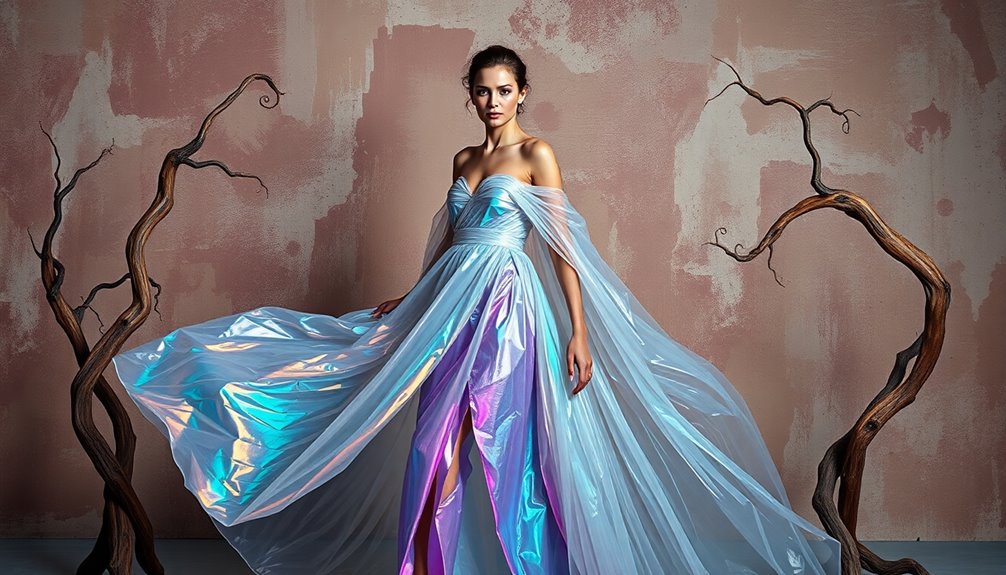
Avant-garde design techniques challenge the conventional boundaries of fashion, pushing the limits of creativity and expression. You'll notice that designers often utilize unconventional materials, such as plastics, rubber, and even food items, to create striking pieces. Found objects like zippers and recycled plastics add an element of surprise, while synthetic fabrics like neoprene and PVC vinyl introduce unique textures.
Deconstruction and reconstruction are key techniques in avant-garde fashion. Designers take apart traditional garments, reassembling them in unexpected ways. You might see asymmetrical zippers or bold ruffles that defy original purposes, challenging your perception of balance and structure. This approach is often exemplified by Rei Kawakubo's deconstruction and the way she challenges traditional notions of beauty and wearability.
Voluminous and sculptural elements play a significant role, too. Oversized silhouettes, often crafted from leather and metal, transform the body into a moving work of art. Asymmetrical cuts and irregular shapes invite you to rethink traditional notions of beauty and wearability.
Lastly, avant-garde fashion serves as a canvas for cultural and social commentary. Designs reflect societal issues and blur the lines between reality and fantasy, inviting you to engage with the deeper meanings behind the garments. In this way, avant-garde techniques redefine fashion as a powerful form of expression. By incorporating elements of historical fashion in contemporary photography, designers and artists draw connections between past and present, highlighting the evolution of societal norms and values. This juxtaposition not only challenges viewers to reconsider their perceptions of fashion but also prompts a dialogue about cultural heritage and identity. Ultimately, avant-garde fashion becomes a multifaceted medium through which narratives are woven, allowing individuals to express their unique perspectives on the world around them.
Technology's Role in Sustainability

Technology plays a crucial role in driving sustainability within the fashion industry. You'll find that innovative materials and manufacturing processes are reshaping how clothes are produced. For instance, recycled fibers like rPET significantly cut down energy and oil consumption compared to virgin polyester.
Biodegradable materials such as Piñatex and Mylo offer eco-friendly alternatives, while companies like Spiber are creating protein-based options that mimic natural fibers with less environmental impact. Additionally, the fashion industry produces 92 million tons of waste annually, highlighting the urgent need for sustainable practices. The emphasis on mindfulness in tea culture can inspire fashion designers to adopt more thoughtful approaches to material selection and production.
Advanced manufacturing technologies, such as 3D printing, allow for on-demand production, reducing excess inventory and waste. AI-assisted design optimizes processes, predicting trends and suggesting sustainable materials to minimize fabric waste.
Blockchain technology enhances supply chain transparency, empowering you to make informed decisions and preventing greenwashing.
Furthermore, consumer engagement through virtual try-ons and digital fashion eliminates the need for physical production, saving resources. Mobile apps help you track garment lifecycles, promoting sustainable purchasing decisions.
These technologies not only enhance efficiency but also foster a community focused on sustainability, ensuring that the fashion industry's future aligns with eco-friendly practices.
Trends in Sustainable Fashion
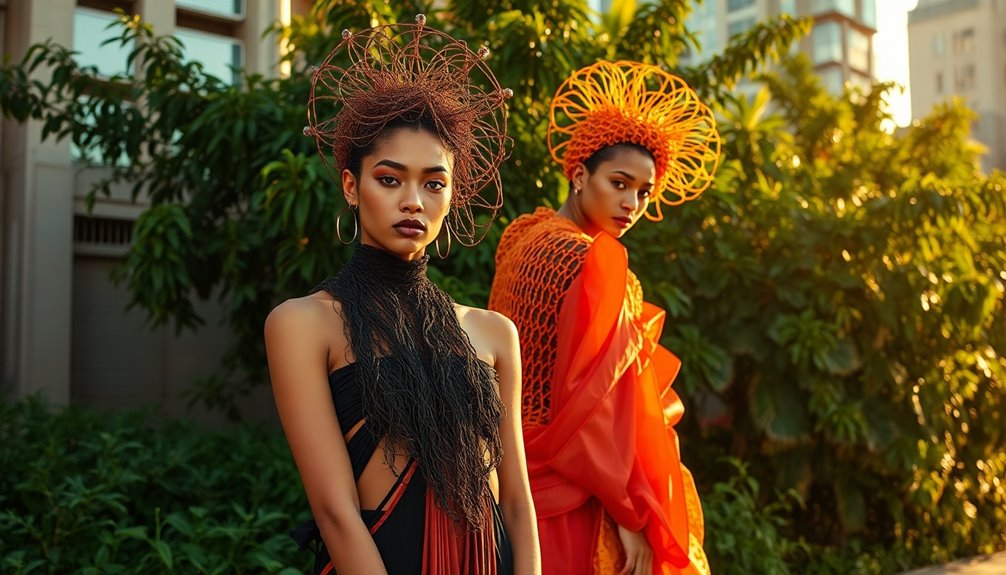
In recent years, the fashion industry has embraced a range of trends aimed at promoting sustainability and reducing its environmental footprint. One key trend is the circular economy, which emphasizes keeping products in circulation.
You might notice brands upcycling old garments into innovative pieces, collaborating with upcycling initiatives, or creating in-house collections that breathe new life into discarded clothing. This approach encourages you to extend the lifespan of your wardrobe through repair and maintenance services.
Another significant trend involves the use of sustainable materials. You'll find eco-friendly fabrics made from food waste, algae, and mushrooms gaining popularity. Organic cotton, hemp, and Tencel are now common choices, replacing traditional fabrics with biodegradable and renewable options. Additionally, the rise of eco-friendly materials reflects a commitment to reducing ecological footprints in fashion.
Additionally, innovative materials like mushroom-based leather and seaweed textiles are emerging.
Slow fashion and minimalism are also shaping consumer behavior. These movements advocate for investing in timeless, durable pieces rather than fast fashion.
Frequently Asked Questions
How Can I Source Sustainable Props for My Fashion Shoots?
You can source sustainable props by exploring thrift stores for unique items, collaborating with eco-conscious designers, and utilizing recycled or upcycled materials. Get creative with what you find to add personality to your shoots!
What Are Some Examples of Sustainable Fashion Brands to Follow?
You should check out brands like Quince, Everlane, and Patagonia. They prioritize ethical practices, use sustainable materials, and promote recycling, making them excellent examples of sustainable fashion brands that align with your values.
How Do Consumers Evaluate the Sustainability of Fashion Items?
You evaluate sustainability by checking brand websites and product tags, looking for clear information on eco-friendly practices. Consumers often seek details on materials, ethical labor, and environmental impact to make informed fashion choices.
What Certifications Indicate a Product Is Environmentally Friendly?
To determine if a product's environmentally friendly, look for certifications like GOTS, FSC, OEKO-TEX, and bluesign®. These labels ensure the item meets strict standards for sustainability, safety, and ethical production practices.
How Can I Incorporate Sustainable Practices Into My Personal Wardrobe?
You can incorporate sustainable practices by choosing eco-friendly materials, exploring secondhand options, building a minimalistic wardrobe, and prioritizing quality over quantity. Regularly assess your purchases to align with your values and reduce waste.
Conclusion
Incorporating sustainable materials in avant-garde fashion shoots not only elevates your creativity but also champions environmental responsibility. By embracing recycled materials and innovative fabrics, you're pushing the boundaries of design while making a positive impact. As technology continues to evolve, so do the possibilities for sustainable fashion. Keep exploring these trends and techniques, and you'll not only transform your work but also inspire others to join the movement toward a more sustainable future in the fashion industry.

